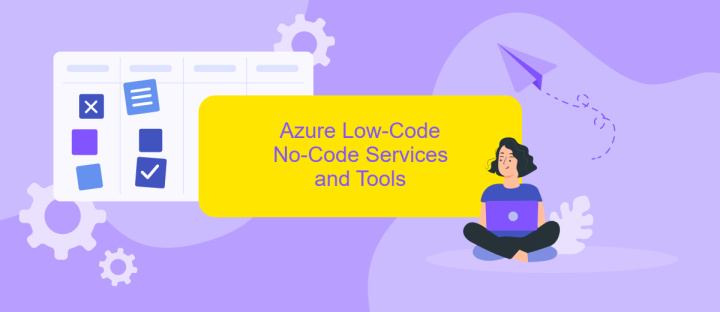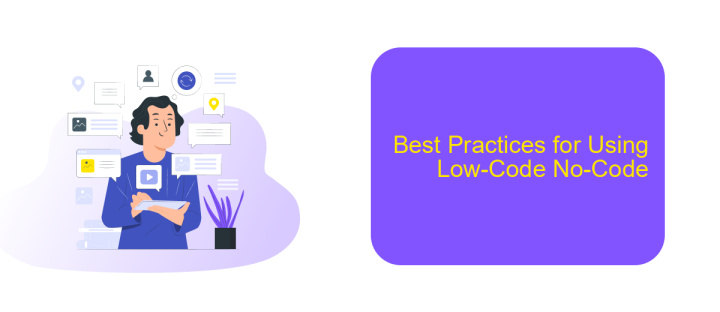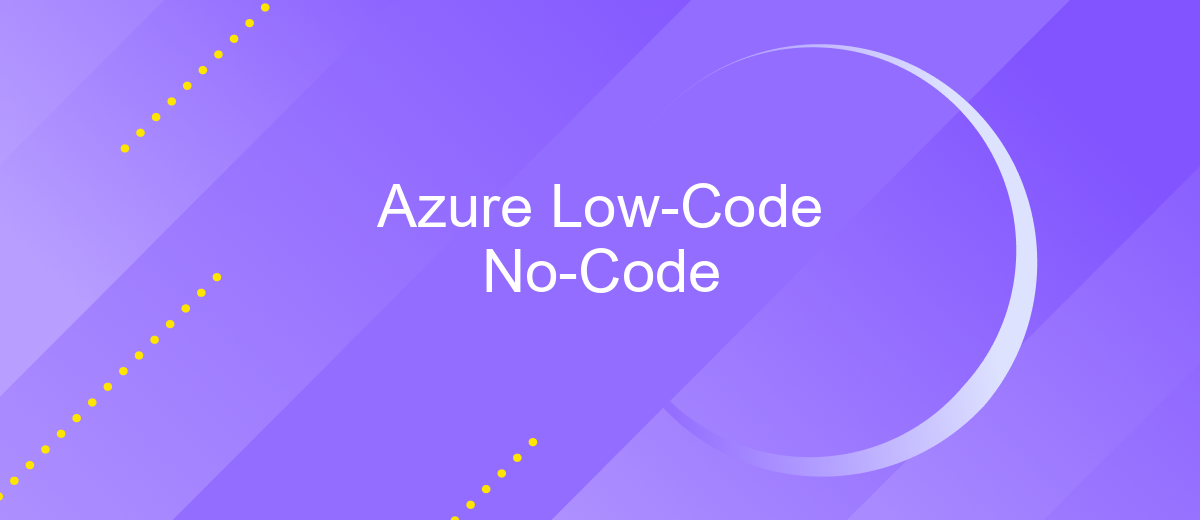Azure Low-Code No-Code
In today's fast-paced digital landscape, Azure's Low-Code/No-Code solutions empower businesses to innovate rapidly without deep technical expertise. By leveraging intuitive interfaces and pre-built templates, organizations can develop applications and automate processes efficiently. This democratization of technology enables a broader range of users to contribute to digital transformation, driving productivity and fostering innovation across various industries.
Introduction to Azure Low-Code No-Code
Azure Low-Code No-Code platforms offer a streamlined approach for developing applications without the need for extensive coding knowledge. These platforms are designed to empower citizen developers and business users to create, deploy, and manage applications swiftly and efficiently.
- Rapid application development
- Cost-effective solutions
- Enhanced collaboration between IT and business teams
- Seamless integration with existing systems
With Azure Low-Code No-Code, users can leverage tools like Power Apps and Logic Apps to automate processes and build custom solutions. Additionally, integration services such as ApiX-Drive can be utilized to connect various applications and services, ensuring smooth data flow and operational efficiency. This approach not only accelerates the development cycle but also reduces dependency on specialized IT resources.
Benefits and Use Cases of Low-Code No-Code

Low-code and no-code platforms offer numerous benefits, including accelerated development, reduced costs, and increased accessibility. These platforms enable users with minimal coding experience to create applications, which democratizes the development process. By reducing the need for extensive coding knowledge, businesses can quickly adapt to market changes and innovate faster. Additionally, the visual interfaces and pre-built components streamline the development process, allowing for rapid prototyping and deployment.
Use cases for low-code and no-code platforms are diverse, ranging from simple automation tasks to complex enterprise applications. For instance, businesses can automate workflows, manage customer relationships, and integrate various systems with ease. Tools like ApiX-Drive facilitate seamless integration by connecting different applications and services without requiring extensive coding. This is particularly useful for small and medium-sized enterprises (SMEs) that need to optimize their operations without investing heavily in IT resources. Overall, low-code and no-code platforms empower organizations to be more agile and responsive to their needs.
Azure Low-Code No-Code Services and Tools

Azure offers a variety of low-code and no-code services and tools designed to accelerate application development and streamline workflows. These tools empower both developers and non-developers to create, deploy, and manage applications with minimal coding effort, enabling faster time-to-market and reduced development costs.
- Power Apps: A platform that allows users to build custom business applications with a drag-and-drop interface, integrating seamlessly with other Microsoft services.
- Logic Apps: A cloud service that helps users automate workflows and integrate apps, data, and services across organizations.
- Power Automate: A tool for creating automated workflows between apps and services to sync files, get notifications, and collect data.
- Azure App Service: A fully managed platform for building, deploying, and scaling web apps and APIs quickly and efficiently.
- ApiX-Drive: A service that facilitates easy integration between various applications and services, streamlining data flow and enhancing productivity.
These tools provide robust solutions for businesses looking to innovate without the need for extensive coding knowledge. By leveraging Azure's low-code and no-code offerings, organizations can focus on solving business challenges and driving growth, rather than getting bogged down in complex development processes.
Best Practices for Using Low-Code No-Code

When leveraging Azure Low-Code No-Code platforms, it's essential to follow best practices to maximize efficiency and ensure robust solutions. Begin by understanding the specific needs of your project and selecting the right tools that align with those requirements. This will help you avoid unnecessary complexities and streamline development processes.
Effective integration is crucial for the success of any Low-Code No-Code application. Utilize services like ApiX-Drive to facilitate seamless integration between various systems and applications. This will ensure that data flows smoothly and operations remain uninterrupted, enhancing the overall functionality of your solutions.
- Define clear objectives and requirements before starting the project.
- Choose the appropriate Low-Code No-Code tools that fit your project needs.
- Utilize integration services like ApiX-Drive for smooth data flow.
- Regularly test and iterate your applications to identify and fix issues early.
- Ensure proper documentation for future reference and maintenance.
By adhering to these best practices, you can efficiently develop and maintain robust applications using Azure Low-Code No-Code platforms. This approach not only saves time and resources but also ensures that your solutions are scalable and adaptable to changing business needs.


Future of Azure Low-Code No-Code
The future of Azure Low-Code No-Code platforms is incredibly promising as businesses seek to accelerate digital transformation and reduce development costs. With advancements in artificial intelligence and machine learning, these platforms will become even more intuitive, enabling users to create more complex applications with minimal coding knowledge. Azure's integration capabilities will continue to expand, allowing seamless connectivity with various third-party services and APIs, further enhancing the versatility and functionality of the applications built on these platforms.
One such service that can significantly enhance integration capabilities is ApiX-Drive. By providing a user-friendly interface for setting up integrations without the need for extensive coding, ApiX-Drive complements Azure's Low-Code No-Code offerings. As these platforms evolve, we can expect more robust features, improved user experiences, and greater adoption across various industries. The combination of Azure's powerful cloud services and ApiX-Drive's integration solutions will empower businesses to innovate faster and more efficiently, driving the next wave of digital transformation.
FAQ
What is Azure Low-Code No-Code?
Who can benefit from using Azure Low-Code No-Code platforms?
How secure are applications built with Azure Low-Code No-Code platforms?
Can I integrate Azure Low-Code No-Code applications with other systems?
What kind of applications can I build with Azure Low-Code No-Code tools?
Routine tasks take a lot of time from employees? Do they burn out, do not have enough working day for the main duties and important things? Do you understand that the only way out of this situation in modern realities is automation? Try Apix-Drive for free and make sure that the online connector in 5 minutes of setting up integration will remove a significant part of the routine from your life and free up time for you and your employees.

